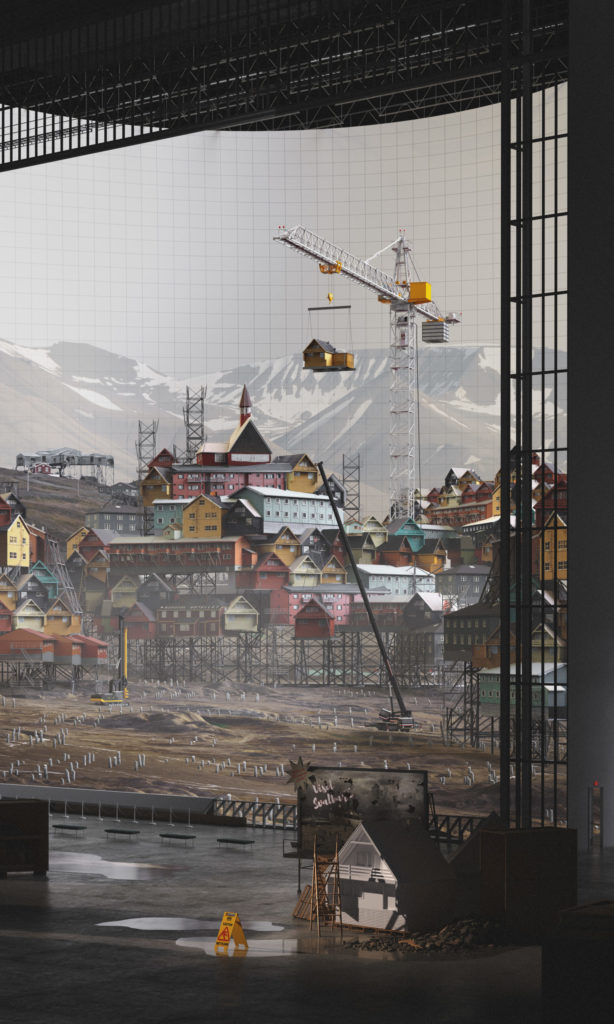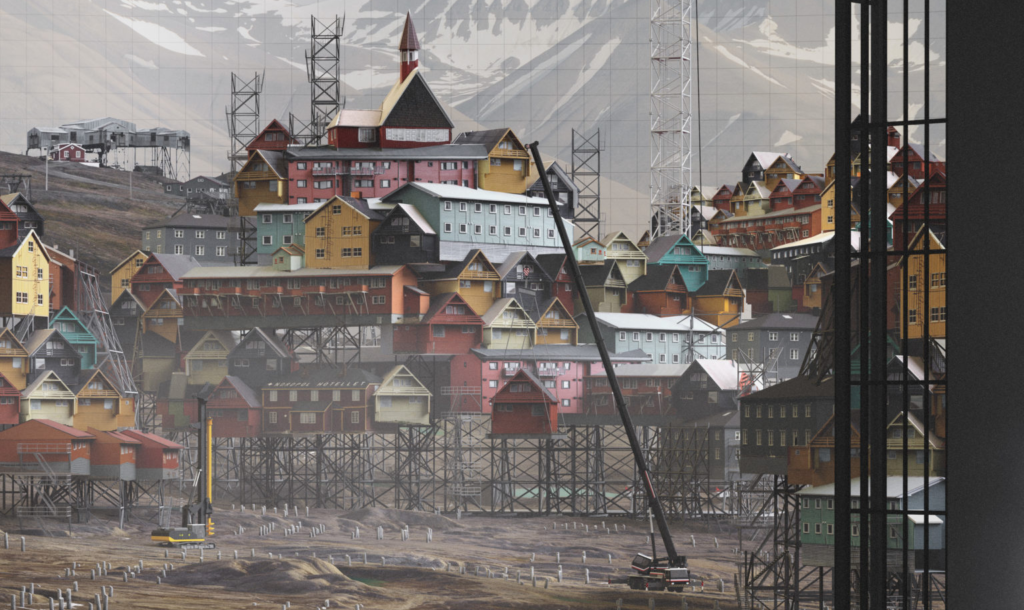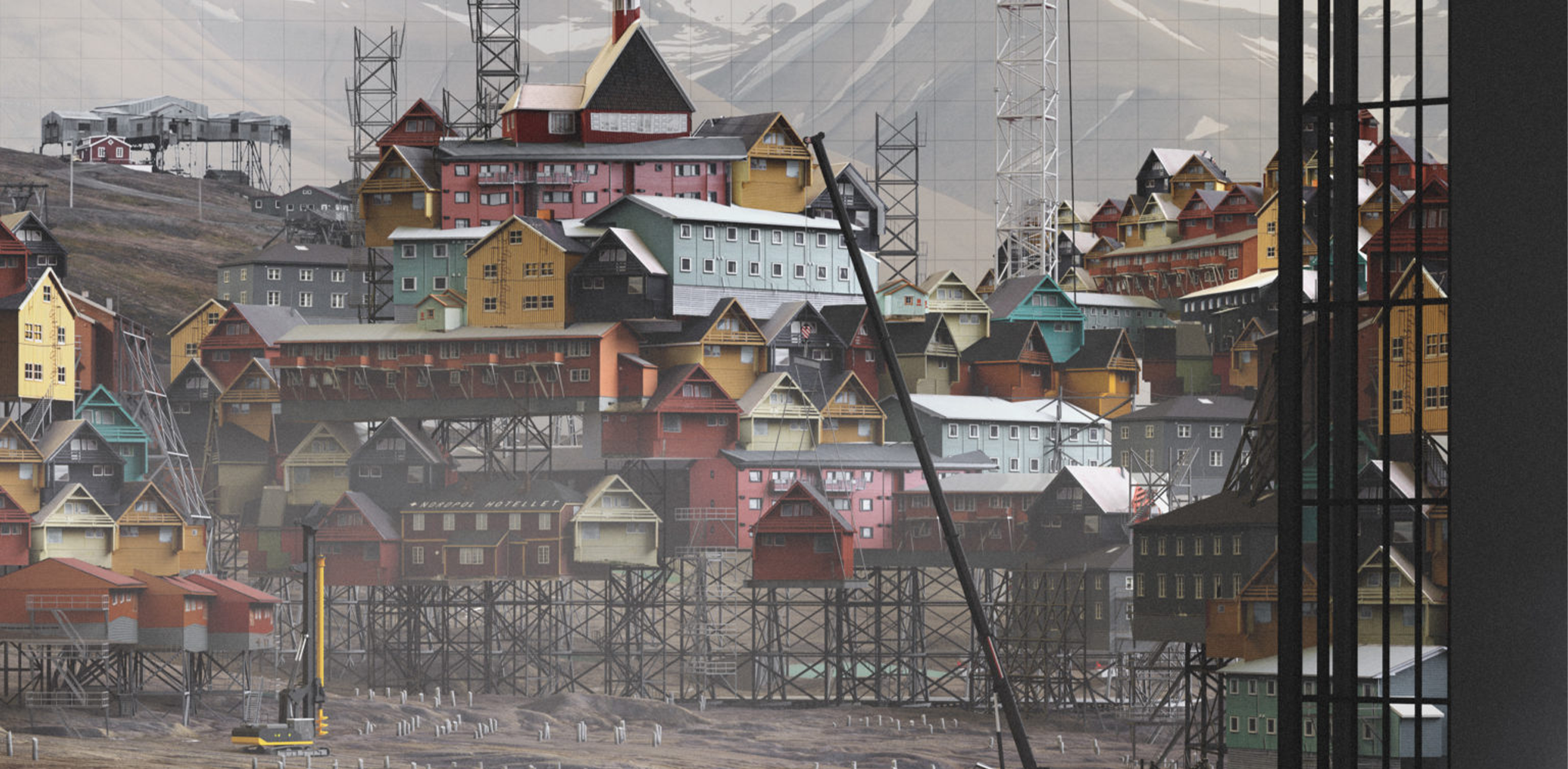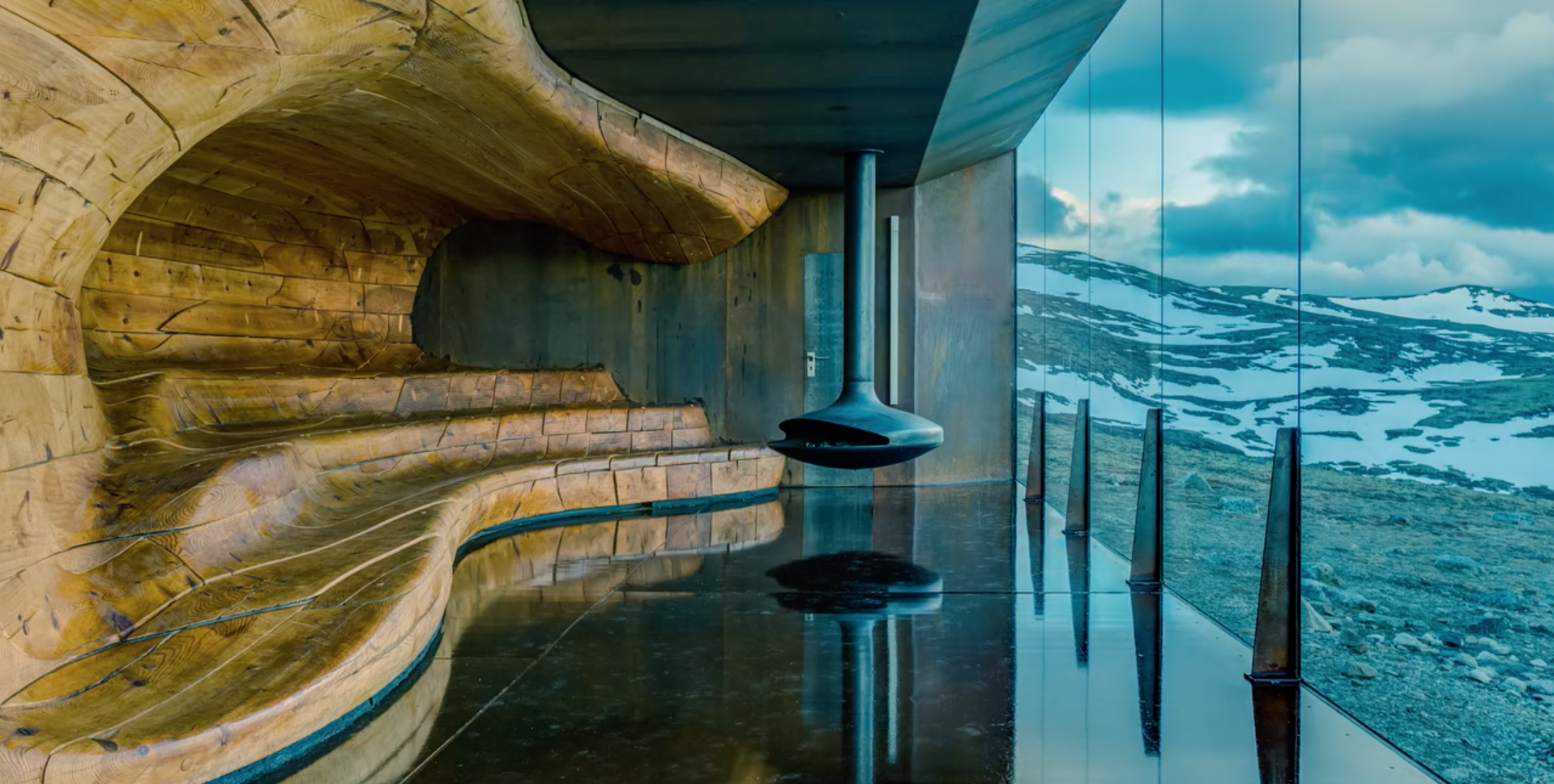Architizer’s inaugural One Rendering Challenge presented an incredible assemblage of architectural visualizations that told captivating stories. The top winner in the Student category was “Lifting Longyearbyen” by Brandon Bergem, a 2019 MArch graduate at the University of Toronto. In partnership with Fiverr’s new architecture and building design services, this submission was awarded a grand prize of $2,500, along with pro rendering software from the likes of Chaos Group, Adobe Substance, Evermotion and Quixel.“Lifting Longyearbyen” was inspired by the dramatic, barren landscape of Svalbard, Norway. It tells two stories at once. Set in the near future, one perspective depicts an incomplete museum and the other shows a town being reassembled and elevated to mitigate the effects of an impending flood.
Juror Mengyi Fan of SHoP Architects loved the composition, describing it as “a complex construction built of layers on layers, tied together seamlessly with skillful control of color and lighting. I love the muted color story presented here — the subtle bit of muddiness reinforces the artificial nature of the carefully crafted environment.”
We caught up with Brandon to understand more about his inspiration, process and feelings on the success of this One Rendering Challenge-winning project.

Nathaniel Bahadursingh: What does winning the 2020 One Rendering Challenge mean to you?
Brandon Bergem: I have had no education or training in visualization, so winning was both a complete surprise and a form of validation: that whatever it is I have been doing must be doing something right.
What were the primary challenges of conceiving your work, from forming the idea to the actual physical process of rendering?
As the student finalist, my image is one of ten I created for my architecture graduate thesis on the transformations happening in the remote Arctic archipelago, Svalbard, due to climate change. The challenge was how to tell a story about the current and possibly future calamities of this place. This developed into depicting the future of the island from the perspective of an even more distant future museum, being built after the arctic disappears. So there is an inversion, treating the future as if it were the past. In the process, it becomes a bit allegorical.
One challenge was in depicting one scene inside of another. Here, there is a diorama of the town being re-assembled and then the incomplete museum surrounding it. There is a subtle surreality to the scene as the town, and the landscape is of a very vast scale compared to the museum interior containing it. Still, there is not a clear transition where the scale shifts (the secret is that almost everything is modeled 1:1). There is a lot of use of optical illusions tricks, such as forced perspective, to achieve that.

A perspective from the incomplete museum overlooking the town and landscape
How did the process and workflow of creating this work compare to traditional architectural rendering practices?
Typically one would have a complete digital model of a building design, then go through a process finding of favorable vantage points, and so on, and so on, until you have a complete rendered representation of a building.
Here the process was different. Here the camera never moved – everything was modeled and composed to it. These renderings are not intended to be representational (as many of the scenes depicted are impossible spatially anyway), rather they are their own form of story-telling.
What connection does the theme of this project have to you and your experience?
A couple years ago I travelled to Norway for a month on a travel scholarship. A cancelled portion of my original itinerary led me up to Svalbard for a couple days. Despite the short time there, I was completely captivated by the history, mythologies, and other strange oddities of Svalbard, its landscapes beautiful, and at times distressing. This short encounter would lead it to become the subject of a year long-thesis research project.

The town’s colorful houses are a vibrant contrast to the landscape.
Do you have any other work as conceptual as this? If so, how does your previous work compare?
Previous works have frequently been conceptually interested in similar themes, folklores, mythos, cultural histories of the different places I have studied. None of the works have been this intense regarding the breadth of research, and how they formed a project – let alone a set of renderings. Each of the ten images produced have their own conceptual quality that sets them apart but also makes them a set. This particular image I am fond of as I stayed in the real town of Longyearbyen, whose colorful houses are a vibrant contrast to the landscape.
What one tip would you give students and architects looking to win next year’s One Rendering Challenge?
Tell a good story!
As one of our two top winners, Brandon receives:
- $2,500 prize money
- Annual Pro subscription to Substance, Adobe’s 3D Texturing Software
- 1 annual license for V-Ray or Corona Renderer, users’ choice
- 200 Chaos Cloud credits by Chaos Group
- 5 3D model collections by Evermotion
- 6-month subscription to Quixel 8K resolution Megascans
- Access to Quixel Bridge and Quixel Mixer
- Featured entry in the inaugural “One Rendering” eBook (published soon!)
Thank you to all participants for their hard work in creating these amazing renderings and telling fascinating stories about architecture. If you are interested in entering next year’s One Rendering Challenge, be sure to sign up for updates by clicking the blue button below.
In the meantime, keep on rendering!
Register for the 2nd Annual One Rendering Challenge










